Mine

Laura El Tanawy



Black and white images are authentic, they help us trace mans history step by step to his modern state. Its classical feel holds its true beauty. The first camera photography were invented in the 1820s, before that time, people relied heavily on traditional media for capturing images, for example, paintings, sketches, and drawings. However, when it emerged, it seemed to vividly capture more information or detail about an object than the traditional media.The first successful black and white image was taken by Joseph Nicephore Niepce a French developer. However, it got destroyed as the attempted to make copies of it. He was again successful in 1825, where he managed to produce a black and white image of a window


Printing is an ancient art, and colour printing has been possible in some ways from the time coloured inks were produced. In the modern era, for financial and other practical reasons, black-and-white printing has been very common through the 20th century. However, with the technology of the 21st century, home colour printers, which can produce colour photographs, are common and relatively inexpensive, a technology relatively unimaginable in the mid-20th century.Most American newspapers were black-and-white until the early 1980’s remained in black-and-white until the 1990s. Some claim that USA Today was the major impetus for the change to colour. In the UK, colour was only slowly introduced from the mid-1980s. Even today, many newspapers restrict colour photographs to the front and other prominent pages since mass-producing photographs in black-and-white is considerably less expensive than colour.

image analysis: I chose this image fo a multitude of reasons, both the composition is of a structured straight build, however, the angle of the lens creates a circular notion of growth and furthers the ideologies of a growing stark area of space. Although you are able to see the detail within the lines and the sense of narratology within the structuralism. despite there not being a choice within the fact of using colour of using black and white, It is clear this image is the most effective within the black and white tonal colours.
Black-and-white images are not usually starkly contrasted black and white. They combine black and white in a continuum producing a range of shades of gray. Further, many monochrome prints in still photography, especially those produced earlier in its development, were in sepia (mainly for archival stability), which yielded richer, subtler shading than reproductions in plain black-and-white. Despite colour being the primary conversion of photos, black-and-white photography has continued to be a popular medium for art photography, as shown in the picture by the well-known photographer Ansel Adams. This can take the form of black-and-white film or digital conversion to grayscale, with optional digital image editing manipulation to enhance the results. For amateur use certain companies such as Kodak manufactured black-and-white disposable cameras until 2009. Also, certain films are produced today which give black-and-white images using the ubiquitous C41 colour process. Colour can be a distraction; it can be dull and lifeless. One of the tasks of photographers is to simplify an image, distilling a scene down to its essence. Sometimes, that essence is colourless. Ansel Adams, discussing the differences between the two types of photography, said, “I can get a far greater sense of ‘colour’ through a well-planned and executed black and white image than I have ever achieved with colour photography.” When researching black and white photography, it is said to be something more then just a filter, as explained here ‘ There are seven essential elements of top-notch black and white photographs, which you’ll see shortly. First, though, is the most important thing to remember: You need to have a reason for shooting in black and white.Not every subject works well in monochrome. So, always ask yourself: Why are you eliminating colour from a particular photo? What makes it so important to shoot your subject that way?’ After considering this, I wondered what effect my images had upon the effect of the image itself. I decided all of the images I had edited to be in black and white were all for a purpose, and the direct effect of the colours created a more interesting effect to the final image itself, and a successful final composition.
I wanted to try my own version of Nigel Tomm’s work so I could understand more about the process and see the transformation for myself. I am also interested in developing the idea further and editing then in different styles, potentially going on to making work with a similar concept incorporating my own photos.

I started by looking through existing women’s fashion and beauty magazines for cosmetic adverts, celebrity and model endorsements and features. I chose a selection of full page or blown up images which showed women with airbrushed skin and perfectly placed features, the majority of the images I found showed re touched images of models with not one hair out of place. Most were advertising a product or a way of life which is unattainable by regular people showing a false perspective of the world.
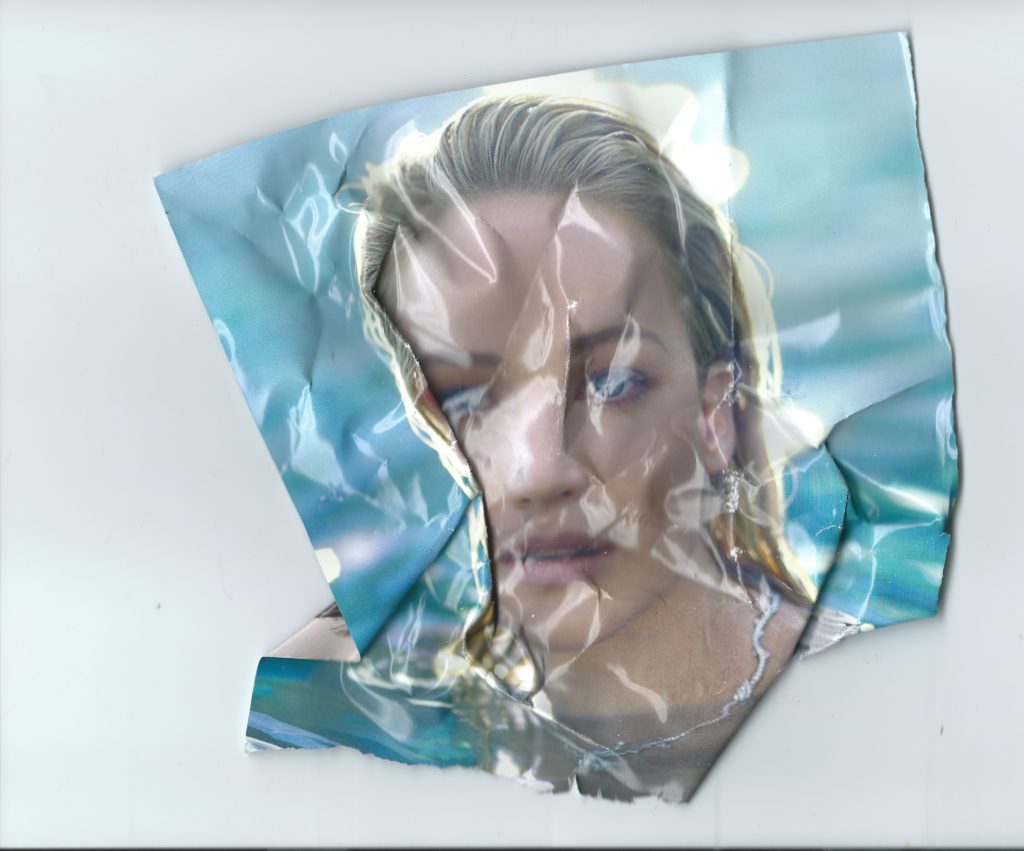
After ripping out a variety of images, some black and white others in colour I started to crumple and fold the pages. I wanted this process to be partially random but to also focus the distortion around the models face disturbing the original aesthetic of the images. The idea of manipulating these photos in a disruptive way of bringing their looks down to a realistic level ultimately undoing the editing process the original photographers have made. I then scanned the crumpled images making sure they were not flattened too much, the scanner captures the depth in the folds and the textures of the edge of the page better than a camera would, it also lights the glossy paper evenly.
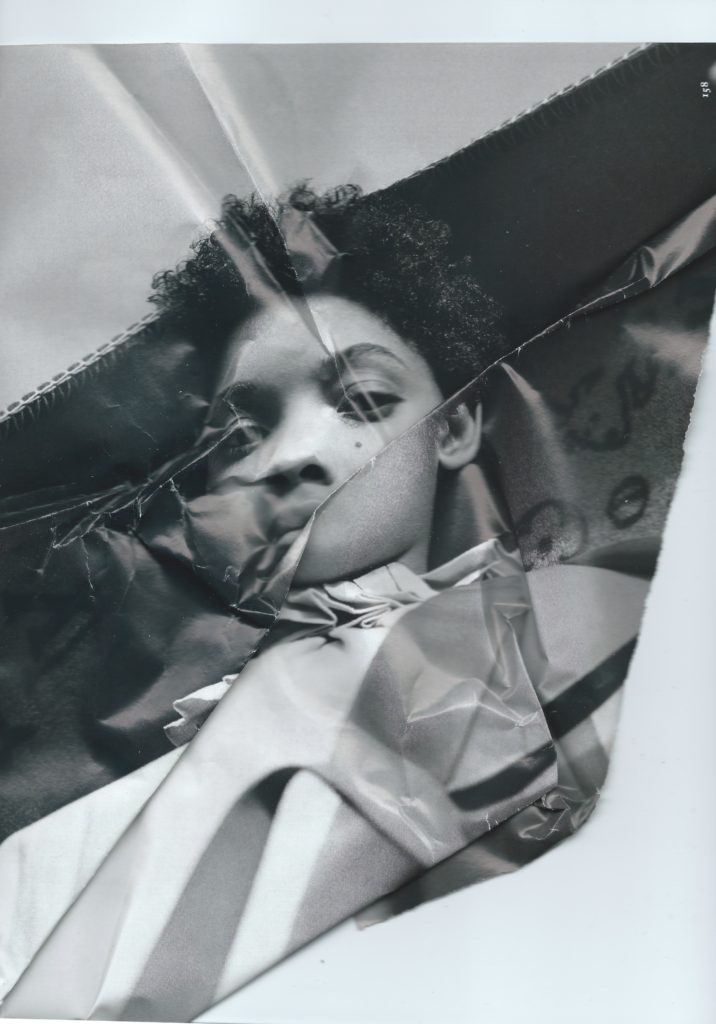
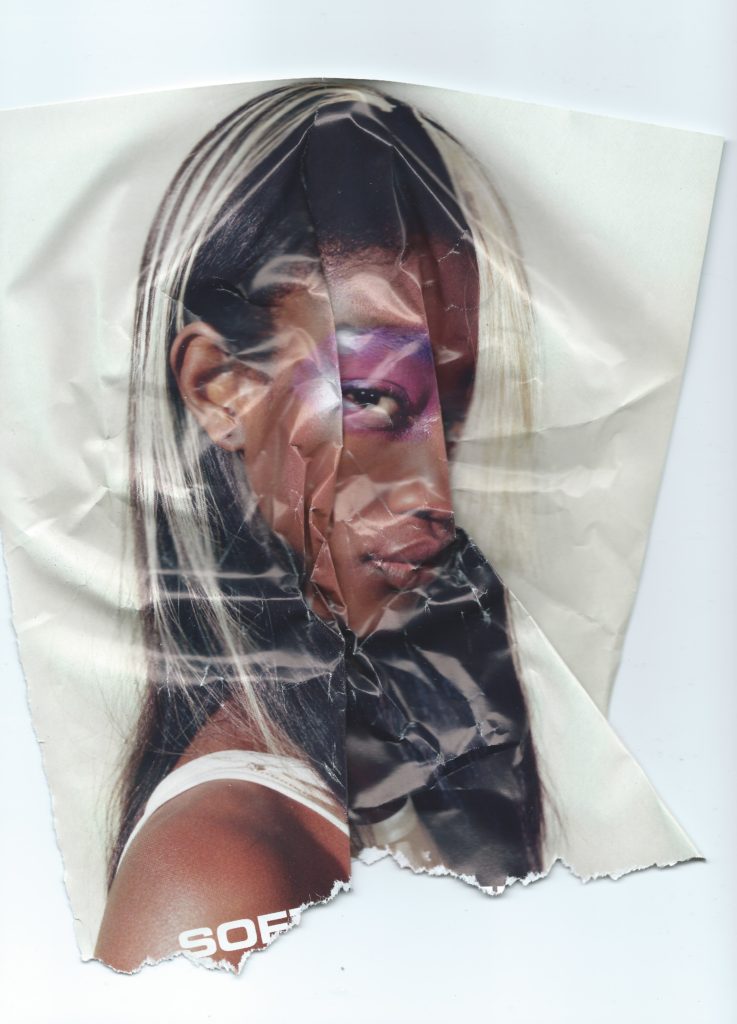


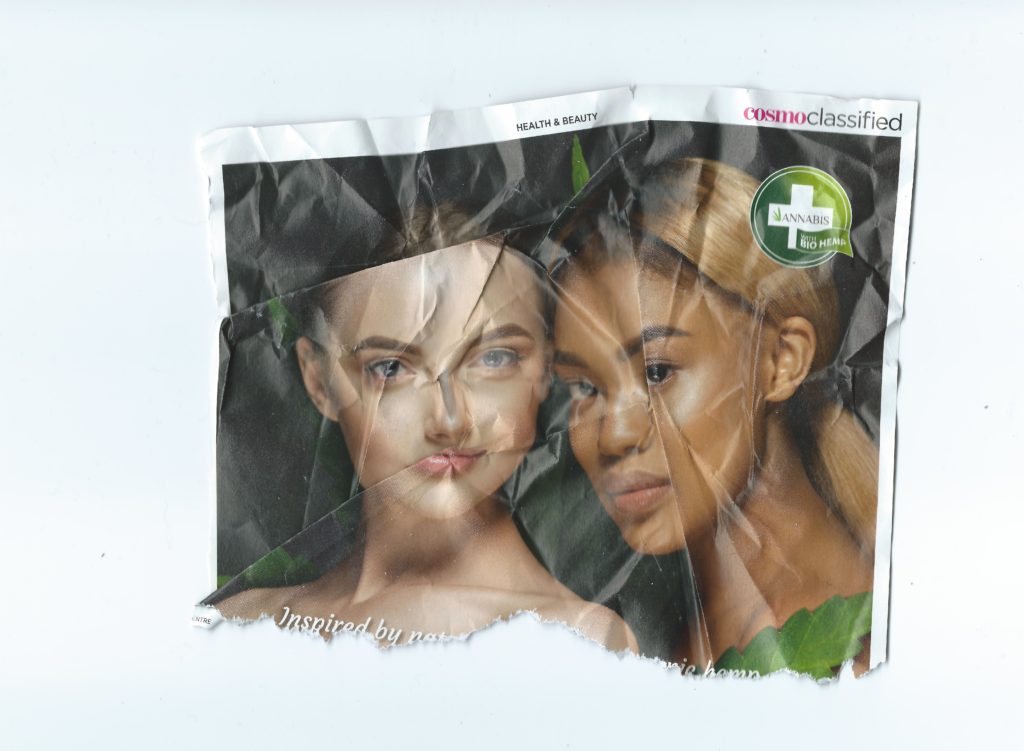

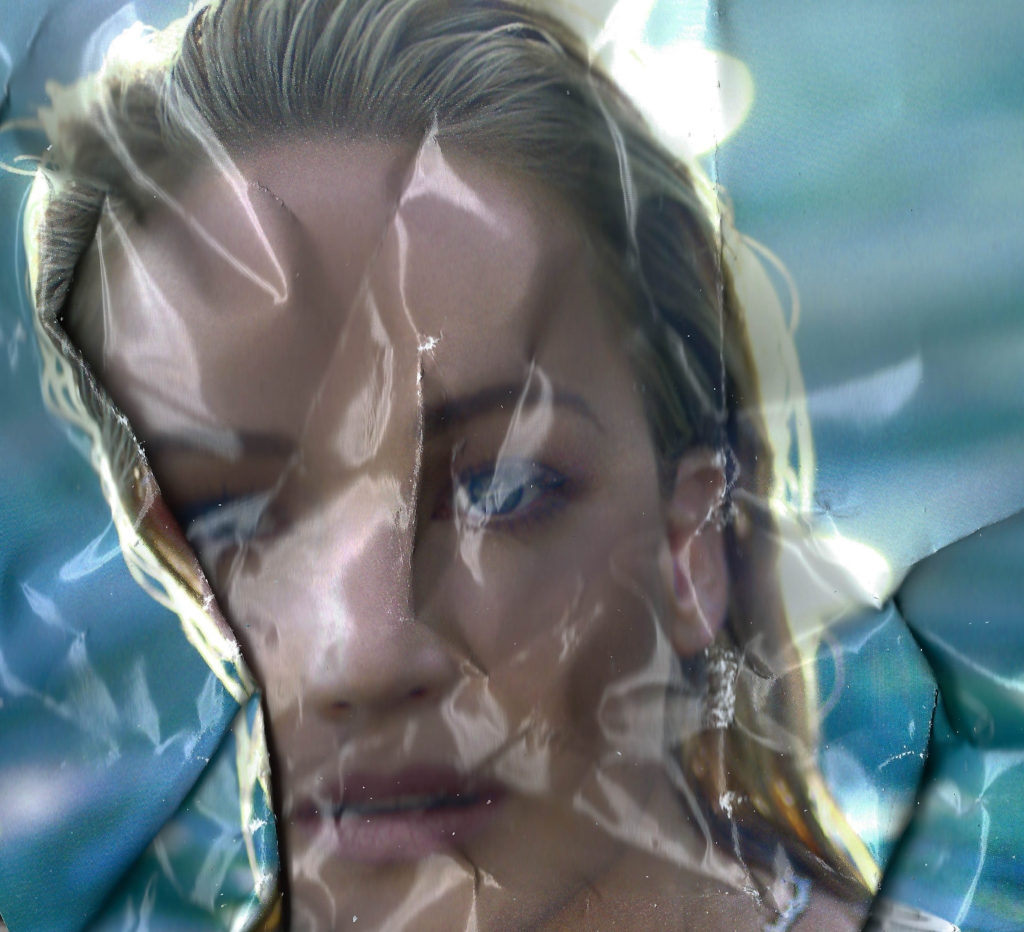
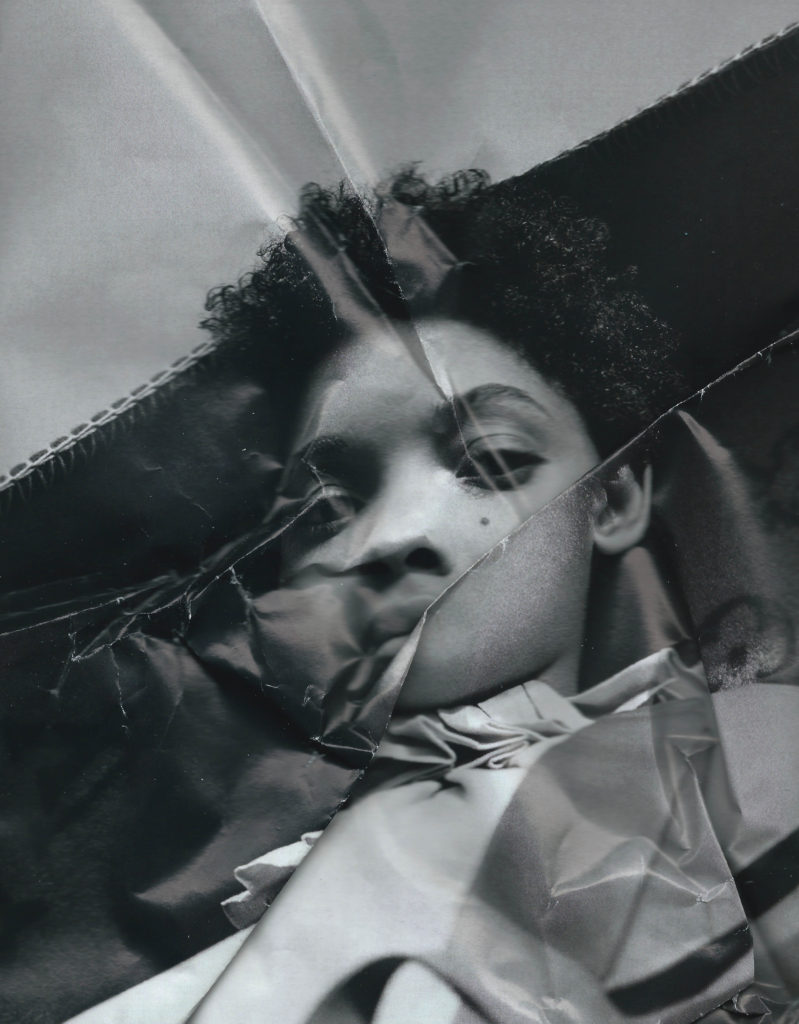
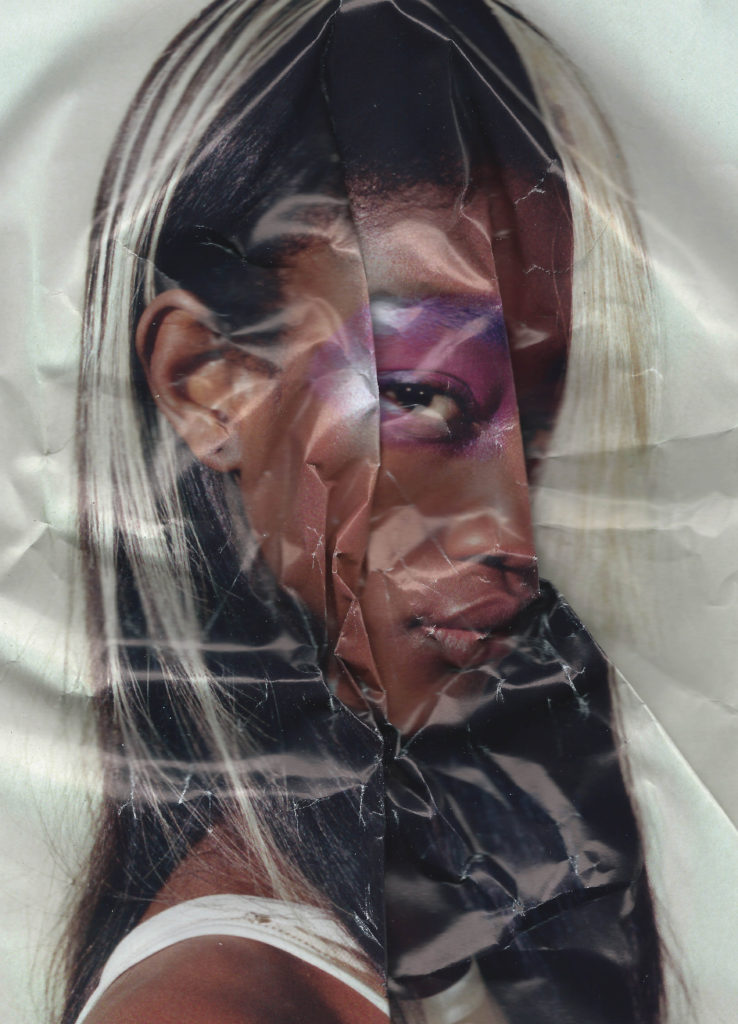
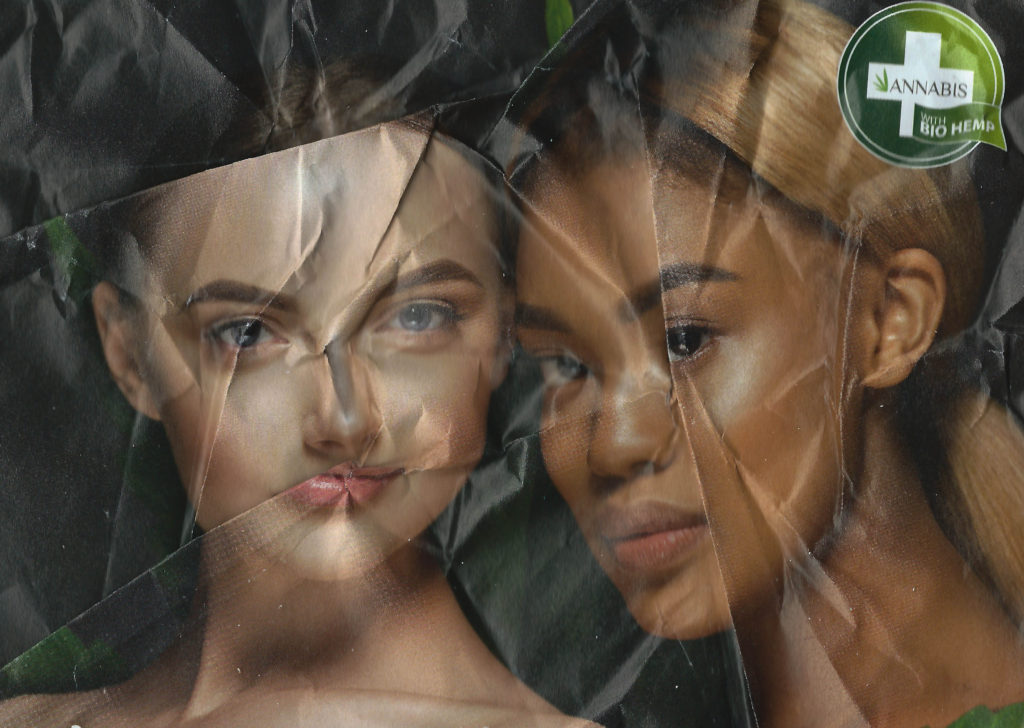
I then cropped the scanned images so that you could not see the white boarder and uneven sides.

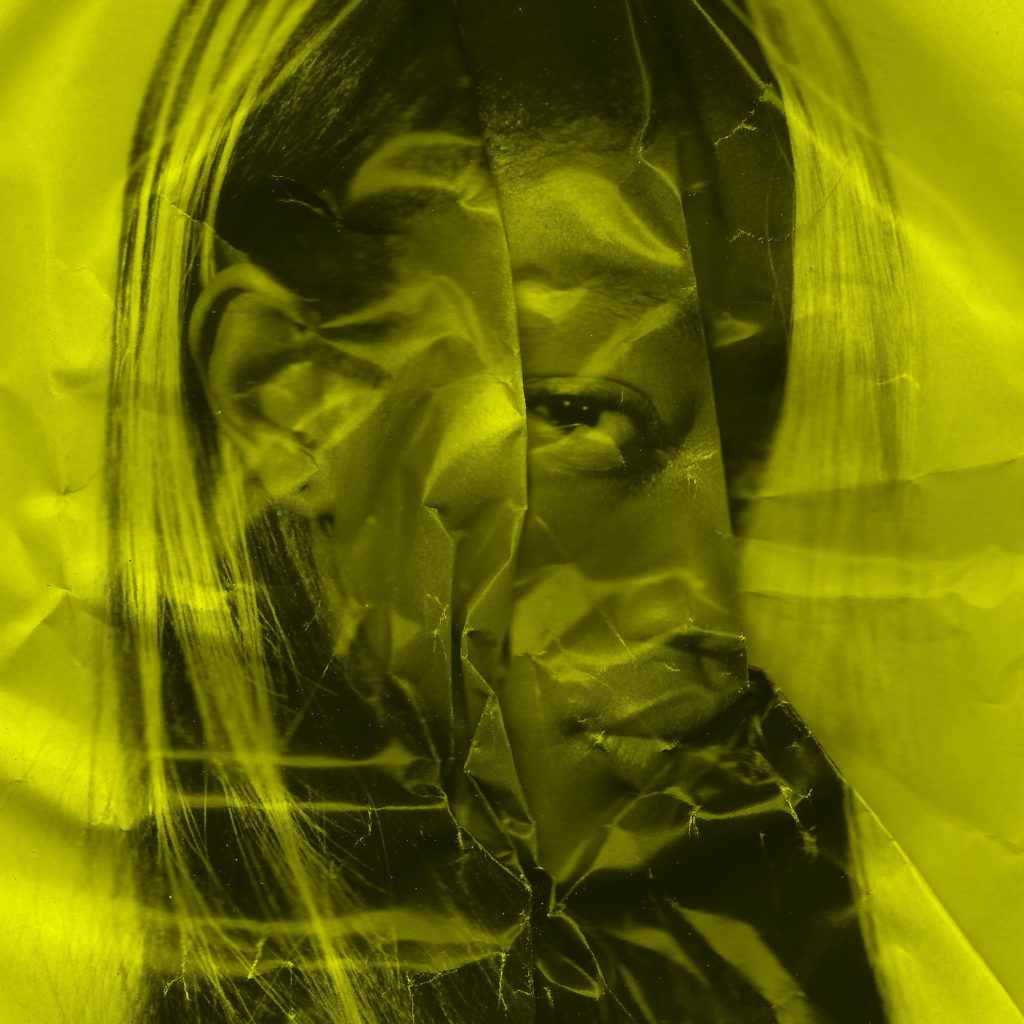

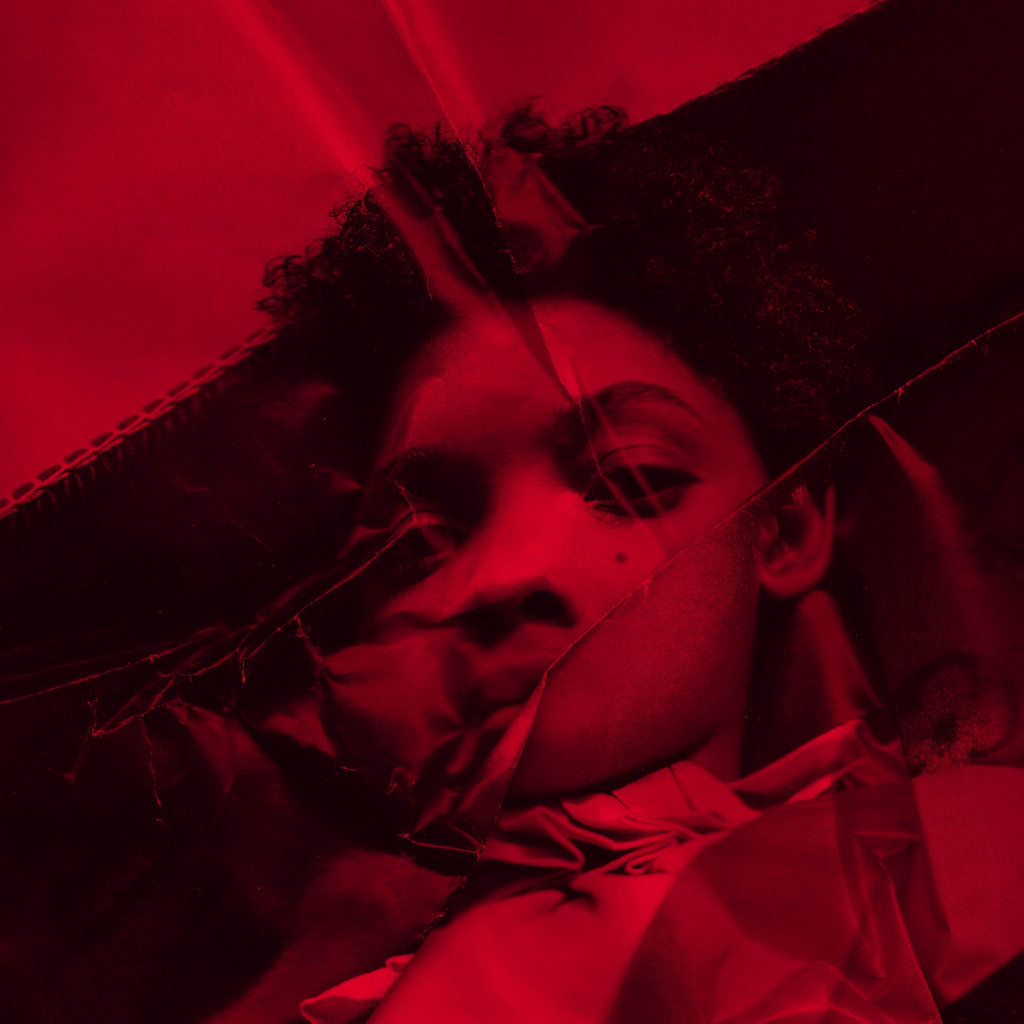


Blanca Vinas born in Barcelona in 1978, graduated in Building Engineering from the Polytechnic University of Catalonia. He has taken an advertising graphic at the Massana School of Barcelona. As a result of his interest in architecture, his photographic work is very focused on urban environments. He currently designs album covers, makes promotional photographs for music groups and is part of the Anodyina Zines collective. His work has been exhibited in different individual and collective shows, and is one of the artists represented by the Atelier Gallery.
Blanca images have a sense of fantasy/dream feel to them, in most of the images they have been taken on a disposable camera, which then allows him to manipulate them once they have been developed. However to create some of the images he tampers with the actually camera so he has no control over what the images will end up looking like, which I think is a brave and different way at looking at photography, and is something that I want to experiment with in my project. One of the way that he does the image is by soaking the images in baking soda which allows the chemicals to run. He then uses double exposure in editing and merges the images together.


reservoir: For this shoot I want to focus more on the reflections capable of being caught within the water, this could be a rope floating above the water showing a more delicate and peaceful composition, or secondly to capture colours and more abstract photos of reflections echoed throughout the small waves and refractions of the water. I belive that this shoot Is combining my influence from both a past students work who looked at beauty within daily life. Also as the resivoir is a very open place, not only should I focus on the water, but the large sky from above, trying to capture a soft movement and also elements of vivid colour within the composition.

zoo: This shoot is a more lenient shoot, I believed I could choose a zoo as a possible location, due to the impact of possible new life, and also the more haiku influence of getting images from animals moving and forming colourful shapes and compositions, so birds and such. I was originally influenced by the image below, due to, movement and composition.

abstract nature shoot: This is the shoot which I believe will be the most transformative to my project. This Shoot is one which I have been thinking about exterminating with but haven’t experimented with yet. It is a more dynamic and difficult shoot in order to perfect, but this is the type of imagery which I belive is the most successful. I purpose to take this shoot somewhere like St Catherines, for the prime purpose of many trees surrounding the area, and too the ability to see all the colours and bounder-less extend that the nature reaches. I not only want to capture abstract throughout within different movements, and colour, but images which focus on shape and possibly more photos which cold be considered as fine art. One of the best subjects for ICM is trees. In general, you’ll see two types of abstract tree photos: a dizzying circle and a blurred streak. You can create the circle by rotating your camera during the exposure, and for the streak, simply move your camera up or down during the exposure.



self portraiture: I have spoken about this shoot many times, as I believe it will make a personal connection between what I myself deem as beautiful and as an almost exposure of my own emotions. I again have three basic ideas for this shoot as explained previously, being segmented, black and white, and using small discs and lighting in order to create lighting compositions on my own face. I belive this shoot will be an interesting look into what I deem to be imperfect and what beauty should be a standard of.
Older persons: I believe focusing on feature of myself is important, but it would also be beneficial to take photos of older people, focusing on different part of their eyes, ears and face all-together. I belive this could be a chance to symbolise almost an evolution of life and death ad the cycle of life, it shows a combining lives of people and nature, and I do belive this shoot Will once again show a more conceptual importance to my work, while too allowing separations of repetitive imagery within my own work. My primary inspiration for this shoot was a past students work. And it also reminds me of when I looked into the family tree of life, and moving and age signifying the beauty of life itself.

Light: Lighting painting is a type of long exposure that uses a source of light to create streaks on an image. You can create these streaks yourself with a flashlight, sparkler, etc., or you can move your camera while shooting a stable source of light, like a traffic light. Abstract slow shutter speed light, actually right light: A lot of abstract photography is created through ICM, where you deliberately move your camera while taking a photo. This movement can be quick and random, like camera tossing, or it can be a thoughtful long exposure. Either way, it’s a fun photography technique to play around with. this shoot is obviously one which is best to be taken at night time, this is evident to get the clear contrasts within the bright light and the firming compositions of other lights. I have two main ideas to which I could create this shoot, this being going somewhere which has a-lot of light as night time and showing a more abstract random composition of differing tonal ranges. And secondly like the image below forming compositions which are tightly thorough about and taking photos of a structure which is moving in a formative way repeatedly, this could perhaps be a complex light, or using many offer touches and creating the source of light myself.

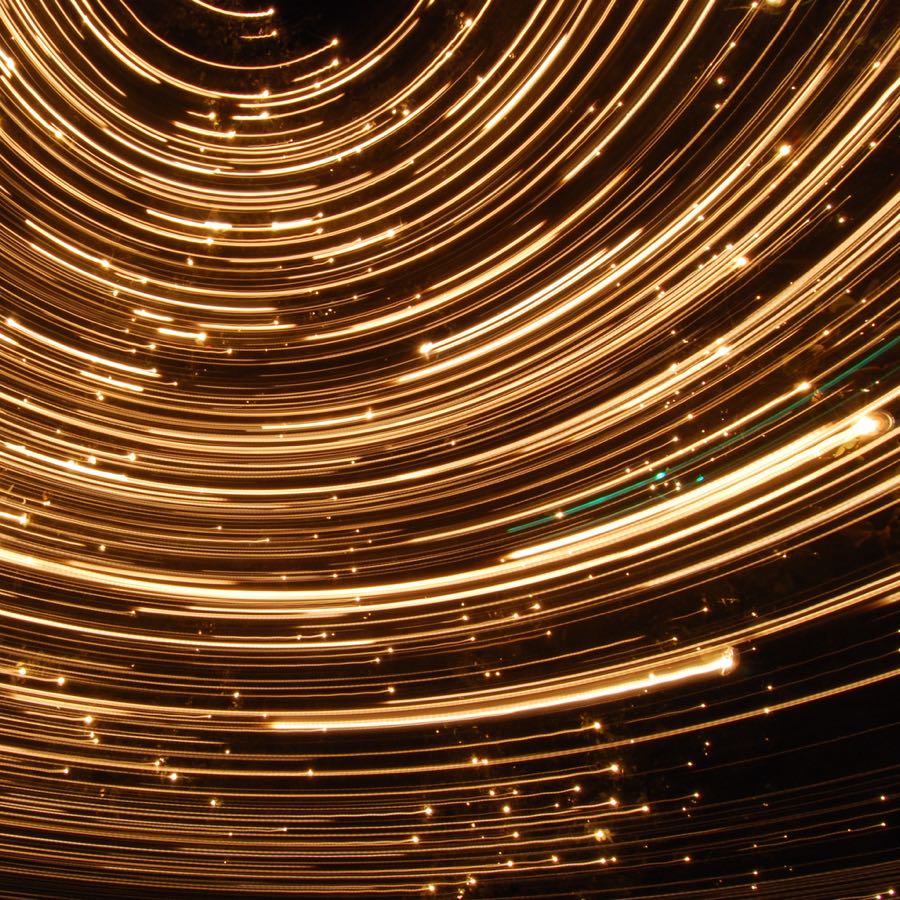
rain: water is a concept form my last project I am very sued to observing, so I Believe technically I should not find this shoot to be too difficult. However I want to capture it not with the presence of peoples, but using its form to create its own composition and too influence a sense of peace and tranquility. The elements of light water, wind and fire Could really be a good start of what the natural elements to the world are so what are the most beautiful. Because of this I believe I should not only do this water shoot, going to the shower, and looking as real rain, but also look into the concepts of different natural elements within photography and how they can and should be perceived as beautiful.

reflection glass: I have in my past work experimented within the possibilities of using mirrors within work, but I have intentions to use it within a different context this time. I have experimented within the reflection of a cd previously, but within this shoot I want to try two techniques of directly flipping an image seamlessly, and then secondly using a larger mirror jut to extend lines and then further edit the outcomes, mimicking and showing a more rounded format of the images themselves.


Macro: nature close ups flowers, The macro shoot is the ability to photography beautiful objects such as nature, in such way where you are not even able to see the orin of what it once was, yet it is still beautiful. The opulence shoot I will capture and try and photography flowers close up, but I want this shoot to be a whole new perspective of natural elements and seeing them perhaps even in more of a scientific way.


opulence and luminance: For this opulence and luminance shoot I am evidently influenced by the the artists work: who focus’ on more abstract lighter work filled with different tonal colour of lights and darks. I have done a blog post about this shoot, so already have a primary narrative which I how I am and can achieve this.
golden hour: The book golden hour is a book created by Kim kang-He, With her second photobook “Golden Hour”, KangHee Kim captures the beautiful colours of the magic sixty seconds after sunrise and before sunset. Similar to her previous book “Magic”, Kim’s images are the result of intricate digital manipulation, blending elements of different captures to form surrealistic views: a street lamp illuminating skyscrapers from above, a man wading through a pool of clouds, subway stations leading into the bright evening sky and so on.
Her manipulations are never too glaring, and not there as a simple effect. Rather than questioning reality, Kim’s dreamy, longing scenes created from mundane situations are a form of urban escapism. To my mind this book is a proposition to capture the beauty within our surroundings, and possibly as she herself has explained a much more dream related aspect of work. The light used throughout this book is definitely the most important, the use of the light is the most abstract and important proposition the book can propose. Differing from my past experiences of haiku, this artists work can be much more developed into surrealism, and created through much more collage aspects. For this shoot I will do much similarly to this artists, and between The most significant ‘ golden-hours’ I will create imagery focusing very much on light yet also how I can both intertwin light within a composition and an interesting narrative.



Overall I believe Doing all fo these shoot will definitely create the final outcomes that will not only work successfully with each other, but too have an ability to work together with a narrative construct. my main aim is to create a theme where all the shoots work seamlessly together, and I am able to make a book and also a video, or perhaps a couple. These 11 shoots will take part over the two weeks, with myself going out everyday repeatedly to get these images. Due to the dependancy on weather the vast majority, there is no specific order which these outcomes will officially come to life. I will now continue to do further research into artists and differing lighting and concept themes which will allow my to find a purpose for each shoot and to find more inspiration to access the best possible outcomes as possible.
My initial ideas taken from the exam paper, Similarity and Variation have stemmed from the artist Jason de Graaf from the fine art section where reflection is a prominent aspect in his paintings. I want to take ideas from this artist and use it in my photography in regards of reflection. From this I can explore natural reflections, mirrors, kaleidoscopes and layering images to repeat subjects and objects like the repetition and reflection of mirrors. For example, some of Claud Cahun’s work shows layering and reflection of images to create surreal images through photo montages and performances.




I also want to explore creating GIFS, which takes the idea of moving through similar images to create a moving action or performance. For example Edweard Muybridge took pictures of animals walking and running to understand the way they moved. This then created a series of photos that represented film but in the form of a series of still images. Following up on the idea of montages, Thomas Florschuetz creates interesting compositions of individual images to create new images of abstract forms from portraits.





Étienne-Jules Marey was a French scientist, physiologist and chronophotographer. His work was significant in the development of cardiology, physical instrumentation, aviation, cinematography and the science of laboratory photography. Most of his photographs demonstrated and documented movement. All of his photographs are layered individual photos to evaluate movement in one photo. This also directly links to variation and similarity as each everyday movement that people and animals make, from walking to dancing is a variation of different and the same, simple movements.
CONCEPTS
As a drama student, movement is very important to completely portray another person. Whenever I am assigned a new character for a play, I constantly study the people I interact with. I analyse their mannerisms and pick up on the way the repeat movements when expressing themselves in certain emotions or storytelling or interactions with other people. Mannerisms tell a lot about a person, whether they have many or little movements. Even facial expressions are important to create a profile of someone. Certain facial expressions effect the way a person talks and of course, is the direct indicator of someones mood, equally so with their mannerisms. Also linking personalities with movement explains people and helps me understand varied characters that I meet in a day to day basis.
Relating to my previous project based on representation of women and how gender is performed, this analysis of movement highlights the divide between gender. Usually, you can tell when someone is acting in a certain way because they are aware how they are representing themselves and are self-conscious to fit into a particular stereotype that is constantly reinforced and pressured upon them, and when someone is not conscious of this fact. I think documenting simple acts like eating, walking and talking then comparing mannerisms and their performance with other individuals, particularly people of the opposite sex to see how far people have divided themselves within gender.
In this project I would like to research various playwrights who focus on movement rather than words, such as Antonin Artaud ‘Theatre of Cruelty’, and theorists such as Judith Butler and her ‘Performative Theory’.
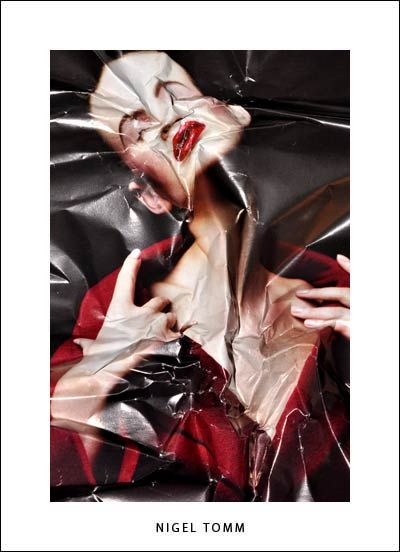
Nigel Tomm is a modern artist whose work has great parallels with cubist art. He is most knows for his manipulation, distraction and recreation of existing image. Working with pre-existing photographs from magazine he tackles the issue of perfection in the media displayed by celebrities and models. The magazine images he choices are often from editorial, beauty or glamour shoots, they show a glimpse of the beauty standards which are pushed to audiences every day. He manipulated them by crumpling the glossy images, randomly folding sections over and distorting to original. He then partially flattens the images back out an re captured them either using a camera in a studio with bright lights making reflections or a scanner which gives clean crisp look. These final images are then either turned to black and white or left in colour creating abstract pieces. His work subverts the conventions of beauty and critiques the these editorial publications which portray ‘perfect’ people. His work mixes the idea of beauty and ugliness two polar opposites which people have very fixed ideologies. In a way his work brings the ‘beautiful’ models and celebrities in the original photos down to a realistic level of beauty. He works with the idea that consumers are no longer looking to attain perfection but rather to be real instead, letting imperfections shine through showing a more modern surrealist approach.

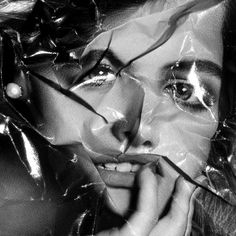
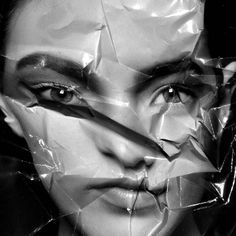


This photo is a hand manipulation of an existing image in a beauty an fashion magazine. the original image would have been taken in a studio with bright lighting helping the evenly illuminate the models face. When the magazine page was distorted and re captured bright studio lights would have been used again, this helps to show off the glossy pages which we link with editorial images. These lights also create shadows which highlight the texture in the page and give it a more warped effect. The photo has a very high contrast because of the lights used and the shadows and highlights created on the paper. The magazine photo would have also had a high contrast because this is often a a technique used to help make editorials images stand out and look larger than life helping to exaggerate models features. This photo is in black and white which helps to simplify it and helps the viewer focus on the interesting shapes and distorted features. The form of the image has been reconstructed by the random crinkles inn the paper, although the photographer has considered the placing of the the folds he did not have complete control over it making the image more spontaneous. We can still tell the image was originally of a beautiful model however this idea had been challenged, the once smooth skin is now covered in lines from the creased paper and the proportions have been disfigured.
How well have ideas developed?
I feel as if my work has developed into a sustainable idea that is consistent with it’s approach and has a clear focus. The focus of my work is the changing light and tidal movement that shape our landscape and alter our perspective on things. This, provoking the ideas about what exists beyond our reality since at a particular time of day we view everything in the same light and also at high tide we cannot see what lies beneath the surface.
Are ideas explored and selective appropriate to intentions?
My ideas that i am exploring have a specific intention to explore the ideas of spirituality, perspective and zen Buddhism. By looking at external factors that shape our environment brings a different type of thinking and shows importance in these things which are often over looked. This is a part of Zen Buddhism and Japanese culture seeks to do, seeing beauty in everything.
Are they sustained and focused?
I feel as if I have a sustained focus on the depiction of light within the series of shoots i have completed at the ‘white house’ location in St Ouens. I think it would be more interesting if i could go to the location a few more times which would allow me to clearly show the changing light at many points within a day. I have been to the location 3 times now, once at golden hour (low tide), once on a stormy day (low tide) and once at a large spring tide. It would be interesting to construct a typology with all the different types of light at the same location for example I would need to go at night, blue hour and sunrise. I could also use another location to show a clear focus on this topic and then do a similar thing with tidal movement too. So far, I have completed one shoot that has a clear focus on the tidal movement in a particular location however i want to complete several more. With these tidal movement shoots, there is also a sense of changing light because they are obviously taken at different times in the day.
How many responses/ shoots?
So far I have completed 6 photographic responses to my ideas associated around depiction of light and tidal movement. I intend to complete at least 1 more at the ‘white house’, 2 more shoots that reflect the change in water level and another series of shoots at another location focusing on how the light shapes the landscape at different times of the day.
Command of camera skills/ photographic techniques and processes
I have clearly demonstrated my use of camera skills and my ability to adapt the settings to meet the particular requirements of the location and lighting. I have yet to explore further with creative techniques and processes however i do not feel as if it is appropriate for the ideas which i have because i am dealing with documentation of lighting and tidal movement that needs to be truthful and trusted. My projects usually consist of manipulation and digital re-touching however this documentary approach is challenging my creativity and allowing me to show my other skills I posses.
Understanding of composition/ considering quality of light. What are the overall quality of the images?
I think my images are strong in the way they have been composed and framed. With the absence of any digital manipulation I need to be strong with the framing of my images to ensure they are aesthetically pleasing and draw the viewer in. I feel as if there are potential areas for improvement to get a little more creative when framing my images however overall they are strong and of a high quality.
How do they respond to research and artists references? ?
My photographic images were inspired and therefore respond to the research i have completed on Hiroshi Sugimoto and Michael Marten. Additional research that has inspired my work has been impressionism and Zen Buddhism which has changed my way of photographing to try and see beauty in everything and disconnect the mind from any logical thinking. I feel as if I need to try and develop my own unique style inspired by all these things which make my work unique and stand out from my inspirations.
How do they interpret exam theme?
Changing light is clearly an example of variation due to the way it is constantly changing and looks different/makes things look different. The light helps us see everything in our world which too is an example of variation. Within our world there are things which are similar too and the light helps us view these similarities. Lighting can also be similar in the way it is similar at different times of the day for example at sunset there are sometimes similar colors. The tidal movement is also a clear example of variation and similarity. It is always moving either up or down changing the way in which we see our landscape. However can also be seen as a similarity because it causes the landscape to look similar when comparing it to another time the tide was at the same place.
How well have ideas developed?
originally i was interested mass density areas and buildings. I wanted to explore the life within a city. whilst looking at Siegfried Hansen I became inspired by colour. From here my idea developed into exploring colours shapes and tones. I am happy with the current status of my project and would like to develop my images further through editing and displaying them in a colourful way.
Are ideas explored and selective appropriate to intentions?
I explored and researched each of my initial ideas until i narrowed it down to my current idea. Through careful selection i chose the theme i felt was most suitable for my project ‘variation and similarity’
How many responses/ shoots?
Overall i made 4 shoots in total, all of which i believe to be strong shoots that gave a direct response to my artist references.
How do they relate to artists references?
My images show inspiration from my three artist references as they are all linked in my project through minor and major details varying from image to image. They all relate due to composition, colour, use of shape and patterns.
How do the interpret exam theme?
They interpret the exam theme as It shows the variation of colours we have available to use and explore on this planet. I also explored shapes and size to give the images a bigger illusion and give them depth.
There are less than two weeks until Easter it is paramount that you explore photo-shoots as per your specification and make your principal images now so you have a critical body of work to edit and produce final outcomes from.
When you are photographing and responding to ideas and inspirations from artist references you are both exploring and recording. The two go hand in hand. If yo do it well and often (on a weekly basis) you should be able to achieve 50% of your overall marks!
In the A2 Exam Planner I have highlighted the importance of a sustained investigation.
Each week you are required to make a photographic response (still-images and/or moving image) that relates to the research and work that you explored in that week. Sustained investigations means taking a lot of time and effort to produce the best you can possibly do – reviewing, modifying and refining your idea and taking more pictures to build up a strong body of work with a clear sense of purpose and direction
Get yourself familiar with the assessment grid here:
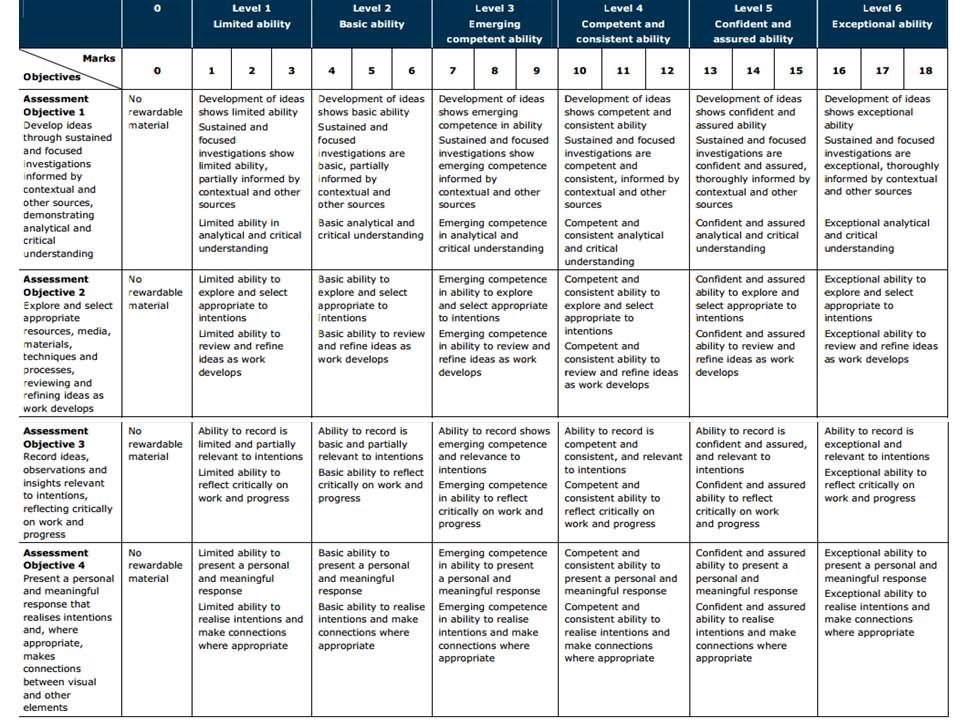
AO2 – Explore and select appropriate resources, media, materials, techniques and processes, reviewing and refining their ideas as work develops.
AO3 – Record ideas, observations and insights relevant to intentions, reflecting critically on work and progress.
To achieve an A or A*-grade you must demonstrate an Exceptional ability (Level 6) through sustained and focused investigations achieving 16-18 marks out of 18 in each assessment objective
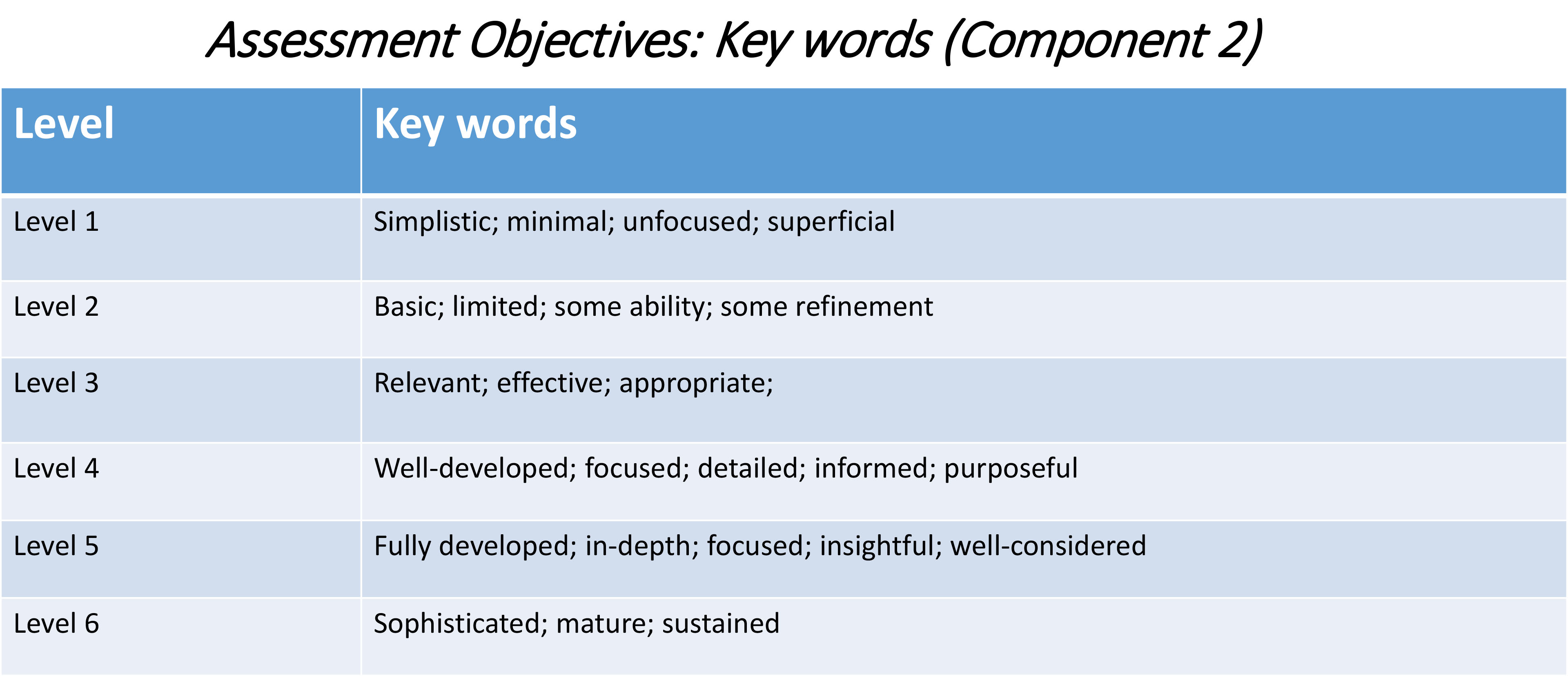
Have a look at previous student, Anna Houiellebecq and her exam work from 2018 and assess it according to the Assessment Objectives A2 Photography: (Edexcel.) Think about what level the student is working at.
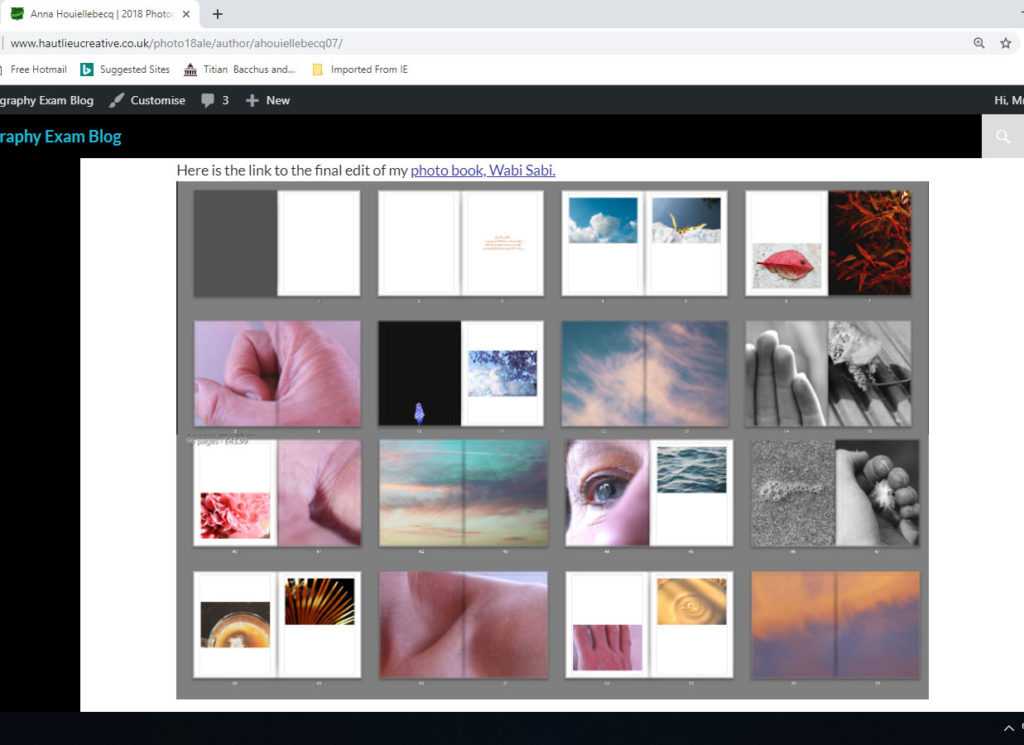
Have a look at previous student, Jude Luce and his exam work from 2018 and assess it according to the Assessment Objectives A2 Photography: (Edexcel.) Think about what level the student is working at.

What you are looking for when assessing A02 (Explore) and A03 (Record):
How well have ideas developed?
Are ideas explored and selective appropriate to intentions?
Are they sustained and focused?
Are they reviewed and refined?
How many responses/ shoots?
Command of camera skills/ photographic techniques and processes
Understanding of composition/ considering quality of light
What are the overall quality of the images?
How do they respond to research?
How do they relate to artists references?
How do the interpret exam theme?
Homework: Based on the evidence of your blog, what level are you working at? Produce a blog post where you reflect on your own progress using those questions above. Provide targets that you can achieve over Easter and that can improve your work. Upload by Wed 3 April
Classwork: To develop your ideas further from research and analysis of artists references and other inspirations on the themes of VARIATION AND SIMILARITY you now must be planning a number of photographic responses (at least 3 shoots per idea.)
Follow these steps to success!
Please be aware that there will be disruptions to normal lessons after Easter as we have to run the AS Exam. We will provide you with alternative classroom, but it is essential that you work independently.
SUMMARY: 13 HOURS LEFT OF NORMAL LESSON BEFORE YOUR EXAM!